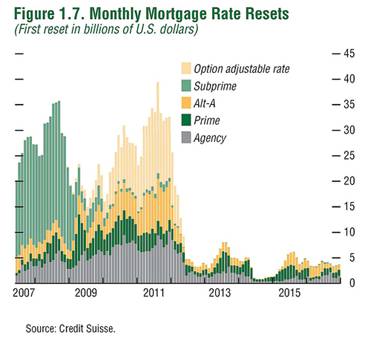
PPIP stands for Public-Private Investment Program - this is the new plan from Treasury Secretary Timothy Geithner to heal the banks and solve the "credit and liquidity" crisis. But will it work?
The answer is of course, its impossible to know. The markets seemed to like the plan, rallying nearly 20% before falling Friday and opening down heavily this morning. Of course the market is still below the where it was when Geithner originally announced the plan. If the markets truly liked the plan they should rally significantly above that point, they have not (but of course we all hope they do).
I've spent a lot of time trying to understand this program and am getting closer. What I have figured out is the structure and the possibilities. I've also settled on my initial notion that I don't like the plan and don't see it solving our problems. Having said that, here are the issues involved.
If you recall, back in October congress paid themselves a $150 billion commission while holding the country hostage in passing what is now called TARP, it provided $700 billion to the Treasury to buy "Troubled Assets". The thinking was that if we could buy the "bad" assets from the banks we could avoid a meltdown. The meltdown occurred anyway and the plan was abandoned very shortly after it passed congress because nobody could figure out how to value the assets. The problem is "Price Discovery" or what price should taxpayers pay for these assets. The real problem was that if we overpaid for assets we would simply be re-capitalizing banks at taxpayers expense and if we paid the market price the banks would be immediately insolvent, thus requiring either an FDIC takeover, a hasty sale or the government pumping much more money into the banks. Instead the Treasury settled on forcing banks to take government money through a preferred stock issue. The banks got some of the cash needed to stay solvent and the government received preferred stock (and evidently the ability to dictate to the banks).
TARP was a stop-gap or a tourniquet. It stopped the bleeding for the short term (though internal bleeding continued and continues) in order to allow for a longer term plan to be developed.
The PPIP is structured to bring in private money (about $30 billion) and then Treasury will match it, the remainder is borrowed from the FDIC (who issues bonds to the public). The FDIC will issue up to $850 billion in bonds to the public in order to finance the PPIP with "Non-Recourse" funding. "Non-recourse" is the key to this whole program, this means that if the deals go south, the "public" part of the partnership bears no risk above what they invested, the FDIC will simply take the assets. This creates basically a new Hedge fund that follows the Freddie/Fannie Model - Taxpayers take most of the risk, but all of the return goes to the equity partners (of which at least half is the "public"). So, taxpayers bear the risk, but don't receive all the return. We've seen this movie before and we know how it ends.
What is the "new" longer term plan? Spending $1 Trillion dollars to buy.........you guessed it.....Trouble Assets? Second plan is the same as the first. This time its disguised as a "public" partnership and utilizes leverage provided by the taxpayer.
So we are back to October - how do we spend $1 Trillion to buy bad assets. This is where Goldilocks comes in. There are only three possibilities (actually four, but that doesn't work with my metaphor....so three for now), as follows:
In purchasing the "troubled assets" from the banks we will either:
Pay too Much (Too hot scenario) - This is what the government is pushing and hoping for (and why leverage is employed) as if too much is paid for the assets the banks will effectively get rid of assets that hurt their capital position and replace them with assets that help their capital position (effectively re-capitalizing the bank to some extent). The bank wins, however if you overpay for an asset you better hope that the asset eventually performs better than everyone currently expects it to. If the assets don't perform then all you've done is move the assets from one balance sheet to another, the FDIC's. Note: This may in fact be what they really want to happen.
Pay too Little (Too Cold scenario) - This is what the government wants to avoid (and the public part wants to encourage). If you can buy an asset that is probably worth 75 cents for about 40 cents and you are able to employ non-recourse leverage, you stand to make HUGE amounts of money with very little risk. The problem is that this path doesn't help anyone but the hedge funds (isn't it strange that paying the market price hurts everyone but the investor?). If PPIP underpays for the assets it leaves a gaping hole in the bank balance sheets that needs to be filled with either more preferred stock or direct taxpayer infusions. There is really no reason for a bank to participate in this scenario.
Just Right (the Just Right option) - Paying the right price for the assets creates other problems that start with "what is the right price?". If such a price existed the marketplace would be actively buying and selling these securities. In fact such a market does exist, but the prices are so far below what the banks value the assets at that it makes no sense for the banks to sell. What the government is hoping for (and will most likely twist the arms of the banks to do) is to auction the securities at pricing that are well above current market price and reasonably below the price carried on the banks balance sheet. In this scenario it depends on the bank whether the deal would make sense, if the bank can take a reasonable haircut and increase its capital position they might do it. Of course the PPIP is overpaying for the assets (in relation to market prices) and thus their is much risk. Nothing really changes in this scenario, the bank potentially is healthier, but the bad assets still exist - they've just changed balance sheets and guess what - nobody in the market place is going to be willing to pay the "just right" price that PPIP just paid, the assets will immediately drop in value because there is no market to re-sell them into.
Finally there is another option, its the option that could happen (and should happen) but probably will be prevented unless Mark-to-Market rules are relaxed - its the Failed Auction option. When the banks put their assets on the auction block they don't actually have to sell them. Think "Ebay". On Ebay you can either put a product up with a reserve price or without a reserve price, if the reserve is met the auction will succeed, if not the auction fails, same with PPIP. The bank will select a basket of assets (keep in mind they will probably try to rig future auctions by starting with the "best-bad" assets first to show that these assets can be sold) and ask for prices, lets say the banks carry the assets on the books at 75 cents. If the PPIP doesn't come in close to that, say 70 cents, the auction will fail. Why is this bad? Let's say the PPIP bids 64 cents, under current rules a "market price" has been established and the bank, who has decided not to sell at 64 cents will have to mark their assets down to 64 cents in order to meet regulatory rules called Mark-to-Market. Let's say that auction was for $5 billion in bad assets, $750 million in capital just evaporated (calculated by taking the difference in the price carried on the balance sheet and the losing auction bid divided by the balance sheet price ((75-64)/75) and multiplying). This is an even worse, worse case scenario because no assets changed hands and the bank now has to potentially raise more capital and potentially mark down other assets it didn't auction. This also forces other banks to mark down assets that are similar. Without a relaxation of Mark-to-Market, the potential for a failed auction under PPIP would be financially devastating for the banks.
Keep in mind that the government understands the potential problems of the failed auction (at least I hope they do) and thus we are either going to see a relaxation of Mark-to-Market or the auction system installed will be rigged against failure (in other words something other than the free market will prevail).
The strange thing is that the government is an owner in both sides of almost any transaction as they own preferred stock in the bank selling the assets and they control the PPIP.......If you control both sides of an auction, you control the auction.
Either way taxpayers lose and the fundamental housing issues are not addressed.
If all of this is a way to move the assets off the banks books into a single entity (in this case the FDIC) by overpaying for assets and then attempting to utilize a thoughtful process for working the assets out and solving the housing issue, this plan just might work. Of course if the "public" investors thought this to be true....they may not participate. In addition, if it were true, why not just allow banks to move these bad assets to the FDIC in exchange for direct FDIC notes that can be used toward capital requirements and then the FDIC will partition losses and gains from those assets to those who contributed but guaranteed a floor over the duration of the assets. That would be easier and cheaper and quicker.
Finally, lets say the assets move off the banks balance sheets - will the banks immediately start lending again? Unlikely, because consumers are still too leveraged. The whole goal of the banks is to let the consumers take the losses. Hmmm, banks screw up and consumers and taxpayers bear the risk, gotta love it.
While this long summary is no way perfect and subject to change as I understand the program more, it lays out the basics and demonstrates why I don't have a lot of faith it will work as promised. If if doesn't its not like its a lot of money, what's a Trillion dollars these days anyway? By the way, I believe it will take at least $2 trillion to solve the problem, but the longer we wait the more it will cost (think Savings and Loans). So, I'm not against spending taxpayer dollars to solve the problem, I just think we should do it, bite the bullet and the taxpayers should get something in return - Equity Appreciation Rights (see my previous blog posts).
Scott Dauenhauer CFP, MSFP, AIF


.jpg)








